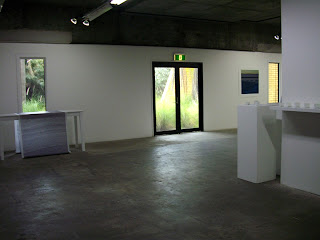If it seems from reading my previous posts that the process of deciding which artworks are to be in the exhibition is a quick process, and involves the curator picking from a selection of artworks like choosing books from a shelf, then I have given the wrong impression. The process is on-going, and will not be completely finalised till we have finished installing the show.
There have been particular series of works from some of the artists that I asked for from the beginning, so those have been fairly fixed. Though how many from the series and how they might be installed is up for discussion according to the space, and to the relationship to other works in the show.
Then there are those artists who have several lots of works that I would like.... but we need to choose just one (one may mean an individual work, or one lot of work). There is much more consideration and discussion then. Questions such as - what will look good in the space? What will look good with the other planned artworks? Could the artist get something completed in time if there is a change of plans? And considerations such as - which walls can support heavy works? What technology do we have or need, for example, for a digital or video work? How many and what size plinths do we have? Is that work available for the duration of the show? Etcetera...
(Here's an installed sewn cloth work from Judith Kentish)
And when one artwork in the planned show is substituted for another for some good reason, as part of the development of the show, all the others may have to be moved or perhaps reconsidered. In a similar way to when when you are making a painting - when you change one colour or shape, it affects all the others and they need to be re-thought.
(I am pausing here to add images of installed works from Sandra Selig)
2010 Adelaide Biennial 'Before and After Science', SA Art Gallery
collaboration with Leighton Craig (sound)
altered book pages, acrylic frames, sound (9 parts)
and alongside this work, was exhibited a 'sister' installation titled
Special Mechanism for Universal Uncertainty (Time isn't Holding Us)
2007-10
elastic, stone, nails
@ 6m x 5m x 4m variable
 Phoebe McDonald's Salt Lake series is travelling to Gympie Regional Gallery (June 15 - July 2) then Pine Rivers Art Gallery (November 4 - 18).
Phoebe McDonald's Salt Lake series is travelling to Gympie Regional Gallery (June 15 - July 2) then Pine Rivers Art Gallery (November 4 - 18). 


































